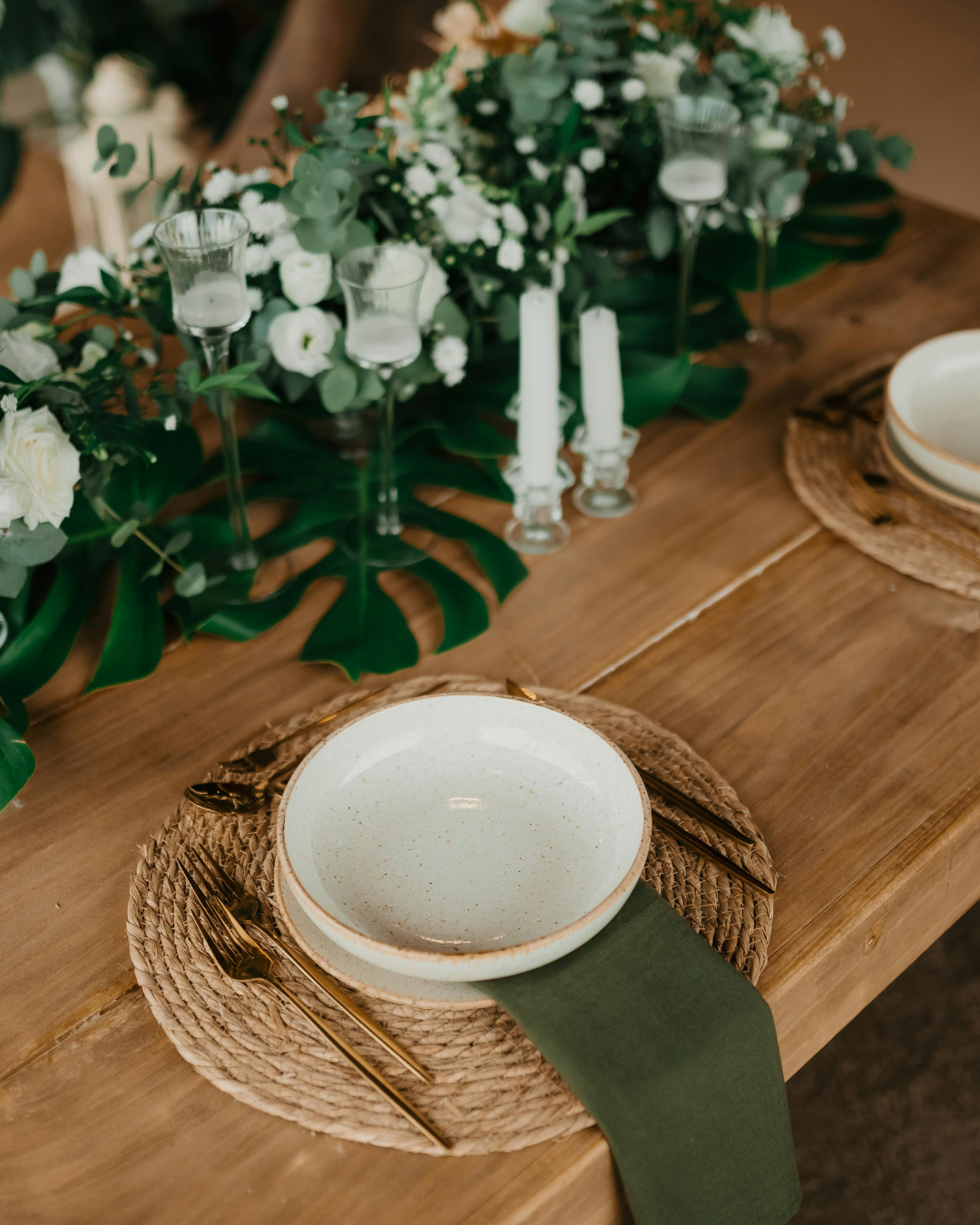How to Incorporate Greenery into Your Home Decor: Transforming Spaces with Nature

Incorporating greenery into home decor can transform any living space into a vibrant and inviting environment. Plants not only enhance aesthetic appeal but also improve air quality and create a calming atmosphere. Whether it’s through potted plants, hanging greenery, or floral arrangements, there are numerous ways to introduce natural elements into one’s home.
Choosing the right plants is essential for achieving the desired look and feel. From low-maintenance succulents to lush ferns, selecting varieties that suit specific lighting conditions and care levels can make a significant difference. Integrating greenery doesn’t have to be overwhelming; even a single plant in a strategic location can uplift a room.
Accessorising with plants is another effective method. Decorative pots and plant stands can complement existing decor styles, from contemporary to rustic. With a little creativity, anyone can find ways to seamlessly weave greenery into their home, making the space more personalised and alive.
Understanding the Benefits of Greenery in Home Decor
Incorporating greenery into home decor offers tangible benefits that enhance both the environment and aesthetic appeal. Greenery not only improves air quality, but it also contributes positively to productivity levels and visual interest.
Enhancing Air Quality and Productivity
Plants play a crucial role in improving indoor air quality. They absorb carbon dioxide and release oxygen, creating a fresher atmosphere. Certain species, like the spider plant and peace lily, are known for their ability to filter toxins and purify the air.
Cleaner air promotes better focus, leading to increased productivity. Research indicates that environments enriched with plants can reduce stress and fatigue. Therefore, adding greenery to a workspace can enhance overall efficiency while fostering a healthier environment.
Boosting Aesthetic Appeal and Visual Interest
Visually, plants can transform a space by adding colour, texture, and life. They act as natural focal points, drawing the eye and creating harmony within a room. The variety of shapes and sizes available allows for creative arrangements, catering to diverse design styles.
Incorporating greenery can soften stark lines and create a more inviting atmosphere. Grouping plants in varying heights and types further enhances visual interest. Simple touches, like a hanging plant or a statement pot, can significantly elevate interior design without overwhelming the space.
Selecting the Right Plants for Your Living Space
Choosing the appropriate plants can significantly enhance a living space. Factors like plant species, maintenance needs, and environmental conditions play a crucial role. Understanding these elements helps in making informed decisions.
Choosing Plant Species and Varieties
When selecting indoor plants, consider their light and humidity requirements. Some plants thrive in low light, like Sansevieria and ZZ Plant, ideal for darker corners. Others, such as Fiddle Leaf Fig and Bird of Paradise, need bright, indirect light.
In terms of size, larger plants can act as statement pieces, while smaller varieties fit well on shelves or tables. It is essential to choose a variety that complements the room’s aesthetic. For example, Pothos offers trailing vines, making it suitable for hanging planters, whereas upright plants like Rubber Plant can add height.
Considering Maintenance: Low-Maintenance vs. Moisture-Loving Plants
Maintenance needs can vary widely among plant species. Low-maintenance plants, such as Succulents and Snake Plants, require minimal care and thrive in diverse environments. They are perfect for busy individuals who want greenery without the fuss.
In contrast, moisture-loving plants, like Peace Lily and Boston Fern, need regular watering and higher humidity levels. These plants can improve indoor air quality but require more attention. Adjusting plant choices based on lifestyle and environment can lead to a more harmonious living space.
By carefully considering these factors, the right plants can flourish, enhancing both aesthetics and well-being.
Creative Ways to Integrate Plants into Interior Design
Incorporating plants into interior design enhances aesthetics and air quality. Various approaches exist, from stylish pots to innovative vertical gardens, all creating inviting atmospheres in any space.
Designing with Pots, Planters, and Terrariums
Pots and planters are fundamental in showcasing plants. Select pots that complement the interior style. For minimalistic designs, opt for sleek ceramic or matte finishes. In contrast, textured or colourful pots can energise a space.
Terrariums provide another creative option. These glass containers can host various plants, maintaining humidity while adding a unique visual element. Layering different materials, like stones, soil, and moss, creates depth. Positioning these elements thoughtfully enhances the room. Hanging planters or shelves can elevate planting options and draw the eye upward, making spaces feel larger.
Innovative Ideas for Vertical Gardens and Living Walls
Vertical gardens and living walls transform ordinary walls into lush green displays. These systems utilise modular planting pockets or panels to grow plants vertically. Selecting the right plants is crucial; consider varieties that thrive in various light conditions. Ferns, ivy, and succulents work well. The installation can be tailored to fit the design of the room, whether utilising entire walls or smaller sections.
Integrating a drip irrigation system ensures plants receive adequate moisture with minimal maintenance. This approach not only saves space but also creates a dramatic visual impact.
Making a Statement with Focal Points and Statement Plants
Focal points in a room can be significantly enhanced with statement plants. These include large plants, such as rubber trees or fiddle leaf figs, which serve as eye-catching centrepieces.
Positioning these plants strategically—near windows or in corners—maximises their impact. Complement the focal point with surrounding decor that enhances its presence, such as a stylish side table or contrasting art. Incorporating layers of greenery through varying plant sizes adds depth. This combination enriches visual interest while creating a balanced atmosphere.
Maintaining Your Indoor Garden
To ensure a flourishing indoor garden, attention to optimal conditions for plant health and effective troubleshooting of common issues is essential. This section discusses the necessary factors that contribute to a vibrant indoor plant ecosystem.
Optimal Conditions for Plant Health and Growth
Proper lighting is crucial for indoor plants. Each species has unique light requirements; some thrive in direct sunlight, while others prefer shade. Placing plants near windows or using grow lights can help meet their needs.
Humidity and temperature also play vital roles. Many indoor plants prefer humidity levels between 40-60%. Using a humidifier or placing a tray of water nearby can enhance moisture in the air Potting considerations such as using terracotta pots ensure adequate drainage. Terracotta’s porous nature allows air exchange, preventing root rot. Regularly checking for drainage and avoiding overwatering will support healthy growth.
Troubleshooting Common Issues
Yellowing leaves often indicate overwatering or insufficient nutrients. It is important to assess the watering pattern and consider using a balanced fertiliser. Pest infestations can hinder plant health. Regularly inspect plants for common pests like aphids or spider mites. Insecticidal soap or neem oil can help manage these issues effectively.
Another common problem is inadequate drainage. Plants with poor drainage may develop root rot. Ensuring pots have drainage holes and using a well-draining potting mix will prevent this. By maintaining optimal conditions and effectively troubleshooting problems, a thriving indoor garden becomes achievable.


